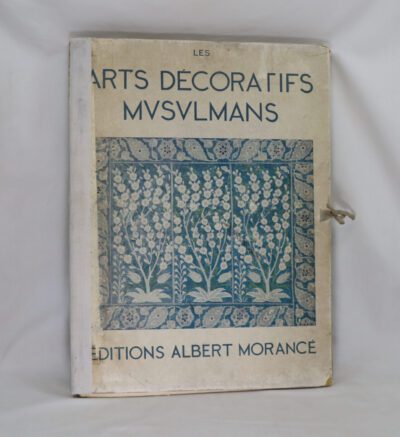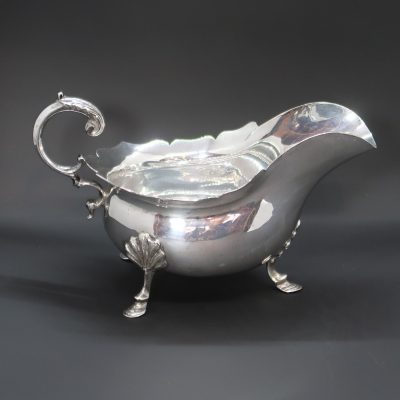Nude Sculpture Resting. Round Marble Base.
By Unknown
Printed: Circa 1930
Publisher: XX
| Dimensions | 12 × 12 × 29 cm |
|---|---|
| Material |
Language: Not stated
Size (cminches): 12 x 12 x 29
Condition: Fine (See explanation of ratings)
FREE shipping
Item information
Description
Nude sitting on a curved rest. Mounted on a round black marble base. Fine patina.
Art Deco Bronze Figure on marble base – believed to be by J.P. Morante
A reproduction of the original, Art Deco c1930 version by J P Morante ( 1882 – 1960 ) a famous French Art Deco sculptor.
Morante was most famous for young, dynamically posed, early 20th century ladies.
Art Deco, short for the French Arts Décoratifs, and sometimes referred to simply as Deco, is a style of visual arts, architecture, and product design, that first appeared in France in the 1910s (just before World War I), and flourished in the United States and Europe during the 1920s to early 1930s. Through styling and design of the exterior and interior of anything from large structures to small objects, including how people look (clothing, fashion and jewelry), Art Deco has influenced bridges, buildings (from skyscrapers to cinemas), ships, ocean liners, trains, cars, trucks, buses, furniture, and everyday objects like radios and vacuum cleaners.
It got its name after the 1925 Exposition internationale des arts décoratifs et industriels modernes (International Exhibition of Modern Decorative and Industrial Arts) held in Paris.
Art Deco combined the styles of early 20th century Modernist avant-garde, with the fine craftsmanship and rich materials of French historic design, but also sometimes with motifs taken from non-Western cultures. From its outset, Art Deco was influenced by the bold geometric forms of Cubism and the Vienna Secession; the bright colours of Fauvism and of the Ballets Russes; the updated craftsmanship of the furniture of the eras of Louis XVI and Louis Philippe I; and the exoticized styles of China, Japan, India, Persia, ancient Egypt and Maya art.
During its heyday, it represented luxury, glamour, exuberance, and faith in social and technological progress. The movement featured rare and expensive materials, such as ebony and ivory, and exquisite craftsmanship. The Empire State Building, Chrysler Building, and other skyscrapers of New York City built during the 1920s and 1930s are monuments to the style.
In the 1930s, during the Great Depression, Art Deco gradually became more subdued, paving the way for the International Style and Mid-century modern. New materials arrived, including chrome plating, stainless steel and plastic. A sleeker form of the style, called Streamline Moderne, appeared in the 1930s, featuring curving forms and smooth, polished surfaces. Art Deco was a truly international style, but its dominance ended with the beginning of World War II and the rise of the strictly functional and unadorned styles of modern architecture and the International Style of architecture that followed.
Bronze is the most popular metal for cast metal sculptures; a cast bronze sculpture is often called simply “a bronze”. It can be used for statues, singly or in groups, reliefs, and small statuettes and figurines, as well as bronze elements to be fitted to other objects such as furniture. It is often gilded to give gilt-bronze or ormolu.
Common bronze alloys have the unusual and desirable property of expanding slightly just before they set, thus filling the finest details of a mould. Then, as the bronze cools, it shrinks a little, making it easier to separate from the mould. Their strength and ductility (lack of brittleness) is an advantage when figures in action poses are to be created, especially when compared to various ceramic or stone materials (such as marble sculpture). These qualities allow the creation of extended figures, as in Jeté, or figures that have small cross sections in their support, such as the equestrian statue of Richard the Lionheart.
But the value of the bronze for uses other than making statues is disadvantageous to the preservation of sculptures; few large ancient bronzes have survived, as many were melted down to make weapons or ammunition in times of war or to create new sculptures commemorating the victors, while far more stone and ceramic works have come through the centuries, even if only in fragments. As recently as 2007 several life sized bronze sculptures by John Waddell were stolen, probably due to the value of the metal after the work had been melted.
Bronze Material – There are many different bronze alloys. Typically modern bronze is 88% copper and 12% tin. Alpha bronze consists of the alpha solid solution of tin in copper. Alpha bronze alloys of 4–5% tin are used to make coins and a number of mechanical applications. Historical bronzes are highly variable in composition, as most metalworkers probably used whatever scrap was on hand; the metal of the 12th-century English Gloucester Candlestick is bronze containing a mixture of copper, zinc, tin, lead, nickel, iron, antimony, arsenic with an unusually large amount of silver – between 22.5% in the base and 5.76% in the pan below the candle. The proportions of this mixture may suggest that the candlestick was made from a hoard of old coins. The Benin Bronzes are really brass, and the Romanesque Baptismal font at St Bartholomew’s Church, Liège is described as both bronze and brass.
In the Bronze Age, two forms of bronze were commonly used: “classic bronze”, about 10% tin, was used in casting; and “mild bronze”, about 6% tin, was hammered from ingots to make sheets. Bladed weapons were mostly cast from classic bronze, while helmets and armour were hammered from mild bronze. According to one definition, modern “statuary bronze” is 90% copper and 10% tin.
Want to know more about this item?

Related products
Share this Page with a friend












